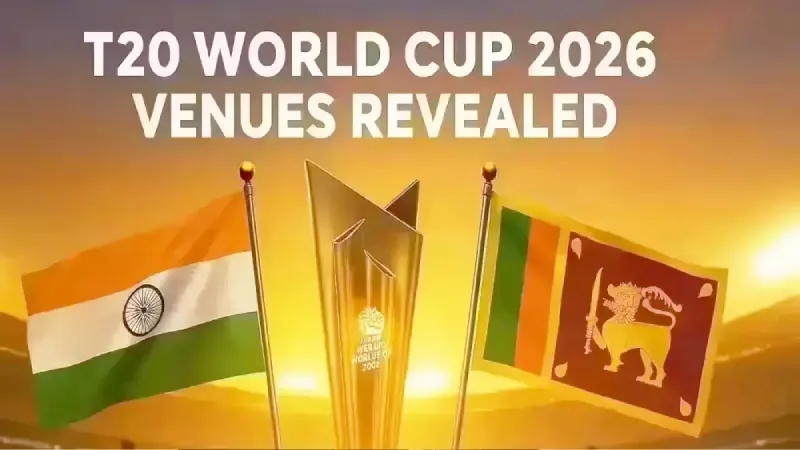Get ready, Cricket fans! The 2026 Twenty-Twenty (T20) World Cup is going to be more than just home runs and one-ball thrillers – there’s already speculation around the logistics off the field! The International Cricket Council (ICC) has chosen two of India’s largest stadiums for the semi-finals – Narendra Modi Stadium, in Ahmedabad, and Eden Gardens in Kolkata. However, the final is still a mystery as it can go to either Colombo or Ahmedabad, depending on how far Pakistan makes it into the tournament.
Ahmedabad and Kolkata: Home Advantage or Pressure Cooker?
Narendra Modi Stadium is often described as a “fortress” for the Indian team, particularly when at full force, and hosting a semi-final match at this stadium could give the home team a psychological edge, while making it difficult to contain the pressure on the visiting team. In contrast, Kolkata’s Eden Gardens has become a place of cricket folklore, where games are won or lost on the momentum created by the excitement of the fans. Historically, there have been many examples of teams that have fallen apart due to the intense atmosphere of the stadium, most notably the 2001 Test between India & Australia. Both venues present different challenges for T-20 teams: slow outfields in Ahmedabad (India) and spinning conditions in Kolkata (India).
Super Eights: A Mini-Tournament Within the Tournament
The 2026 competition will be structured similarly to the 2024 USA/West Indies tournament: 20 countries competing in four groups (five per group), followed by a Super Eight round-robin between the winners of each of the four groups. The nature of this condensed tournament has the potential for small, lower-profile teams (Nepal, Oman, etc.) to emerge as giant slayers and take advantage of complacent performances from the “test” nations. As with previous T20 World Cup competitions, we’ve seen smaller countries (Ireland & Afghanistan) upset larger traditional powers; the Super Eight rounds can be viewed as an incubator of stress/pressure for all participating teams, as the value of each run/wicket/over is critical.
Pakistan and Sri Lanka: Venue Contingencies Rewrite Plans
Pakistan and Sri Lanka are the only two teams that determine the knockout phase of the World Cup. When either team makes it to the semis, they will play in Colombo. That’s a big deal because the travel and preparation to get to the semis can cause both physical and mental fatigue to one of these teams. Also, although the Sri Lankan team has home-field advantage in Colombo (and likely a stronger batting lineup than Pakistan), their team has less overall strength at each position compared to the Pakistani team. The conditionality of where the semi-final games will be played creates strategic opportunities that we do not see as often in World Cups. Teams can plan how to chase runs and what type of bowlers to select in the match by knowing where the next round of the tournament will be held. World Cup cricket strategy has evolved from 20 overs to planning out your team’s strategy for up to four different venues before you start playing.
Administrative Moves: Diplomacy Off the Field
Off the field, Boardroom diplomacy is shaping the tournament through backdoor means. The Saikia-Naqvi meeting on the Asia Cup (independently from ICC meetings) shows that Cricket Administration has a lot of influence over Scheduling and Venue Logistics for T20s, although it may be indirect. While Fans focus their attention on Batting Averages and Strike Rates, Decisions made behind closed doors at the end of corridors of power will affect how pitches are prepared, tickets sold, and ultimately what kind of mental edge teams will have going into key matches. So while today’s T20 is all about Batting and Bowling skills, it is also about boardroom Chess.
Stay updated on the latest cricket news and exciting updates at Six6slive. Dive into our in-depth articles and analyses to connect with the action today!
